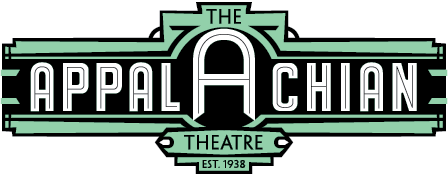LIVE SHOWS AT THE APPALACHIAN THEATRE, 1938-1962: AN INTRODUCTION
Dr. Gary Boye
From its beginnings, the film theater was a place of live shows as well as movies. In the silent era, films demanded some type of live musical accompaniment. Between films, musical performances, and vaudeville acts were an occasional feature as well. Even into the era of talking pictures with their own sound tracks, the stages in movie theaters were used for live entertainment between shows.
There were over 100 live shows at the Appalachian from 1938-1962, with the bulk of the shows occurring before 1955. These shows included local groups from Appalachian State University (or, as it was called prior to 1967, Appalachian State Teachers College) and charity organizations such as the Lions Club. Talent shows and beauty contests were held on occasion; traveling professional shows were booked several times a year, especially before and during World War II.
Some of these shows used the standard pop music of the day, but over half of the live shows at the Appalachian featured what would now be called "country" music. The live shows at the Appalachian can be broken down as follows:
The "other" category includes a few plays, swing band shows, one amateur gymnastics show, and an organ concert. Most live shows were not connected to the film, but spook shows typically combined live performances and gimmicks with an accompanying horror film. Sometimes the stars from the motion picture shown on the screen would come to promote their own films. For example, Bill Elliott came to the Appalachian on July 18, 1942, to promote his new film, North of the Rockies.
There were two short-lived weekly stage shows involving country music: ByGosh and His Country Store in 1940 and the Hill Billy Jamboree and Barn Dance in 1943. These shows ran for several weeks at a time, with a variety of local performers as well as skits and audience participation.
The number of live performances per year is telling, with peaks in the years before the American entry into World War II: 15 shows in 1940. After a drop in shows with the beginning of rationing, the War Bond rallies of 1943 reached 20 live shows, the all-time high. After the War, the Appalachian approached one show a month in 1948/1949:
Note that the Cinemascope wide screen was installed in January 1954, making live performances rare afterwards—there just wasn't enough room on stage for anything more than a small ensemble. No doubt, competition from television also contributed to the steep drop in live shows in the mid 1950s and afterwards. The last advertised live show at the Appalachian was a "Big Twist Contest" on May 4, 1962. There was apparently enough room left on stage to at least do the twist, or perhaps audience members twisted in the aisles or at their seats!
In its heyday, the Appalachian Theatre stage featured some historic acts, including major figures of the Grand Ole Opry radio program from WSM in Nashville like Uncle Dave Macon, Minnie Pearl, Cowboy Copas, Lonzo and Oscar, and Pee Wee King. Fans of bluegrass music will note that the man whose band named the style, Bill Monroe and His Blue Grass Boys, appeared twice on stage here, in 1941 and 1952. The triumvirate of bluegrass founders is completed by three performance of Lester Flatt, Earl Scruggs, and the Foggy Mountain Boys and a late 1961 performance by the Stanley Brothers, Ralph and Carter. To cap it all off, the local experimental radio station, WDRS, held a Hill Billy Jamboree and Barn Dance on the stage of the Theatre in 1943. A certain 20-year-old local guitarist from Deep Gap played as a part of that program. Hint: There is a statue of him in downtown Boone at King and Depot!
This blog will feature some of these performers and their performances, beginning with the man who may be the most important early country music personality ever to play in Boone: Uncle Dave Macon . . . .


